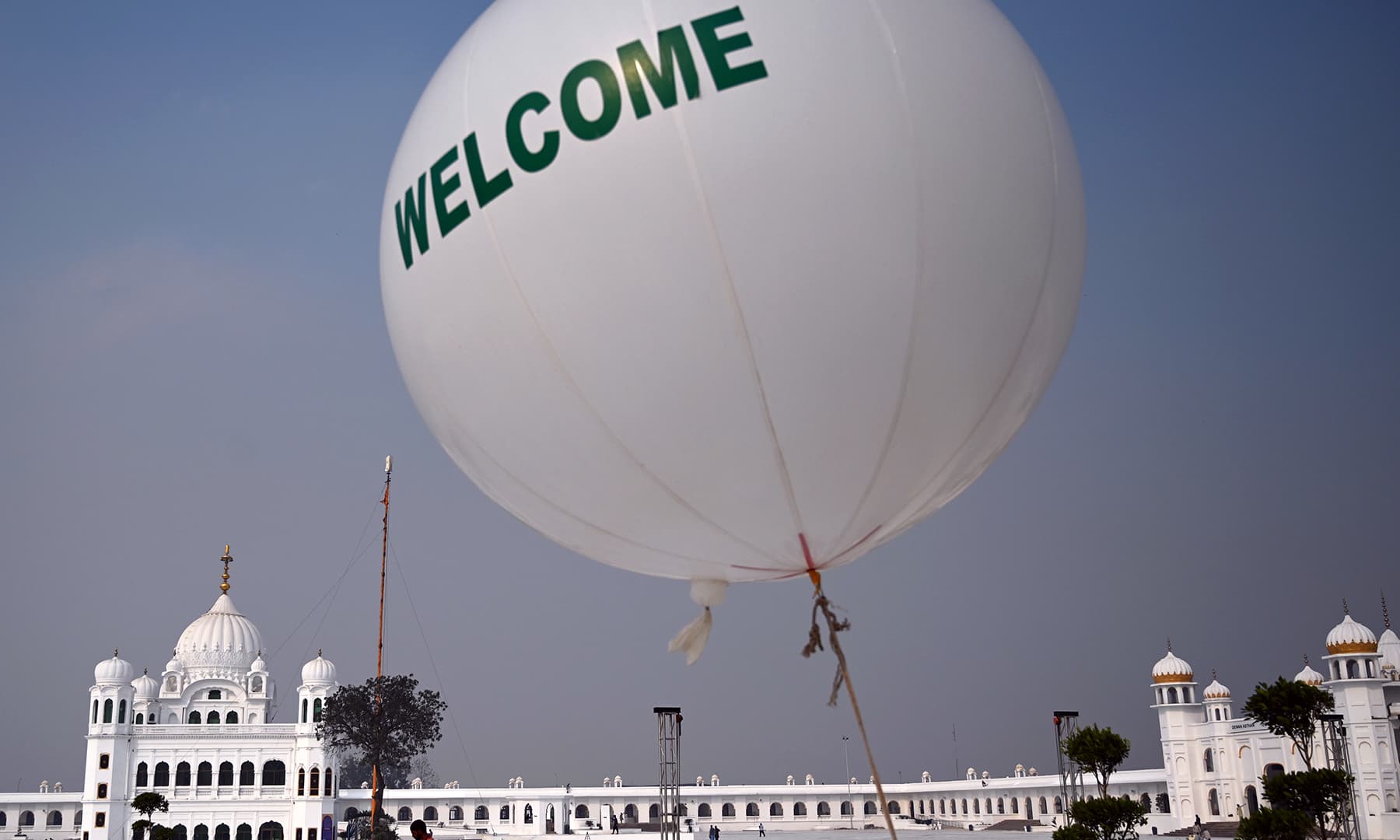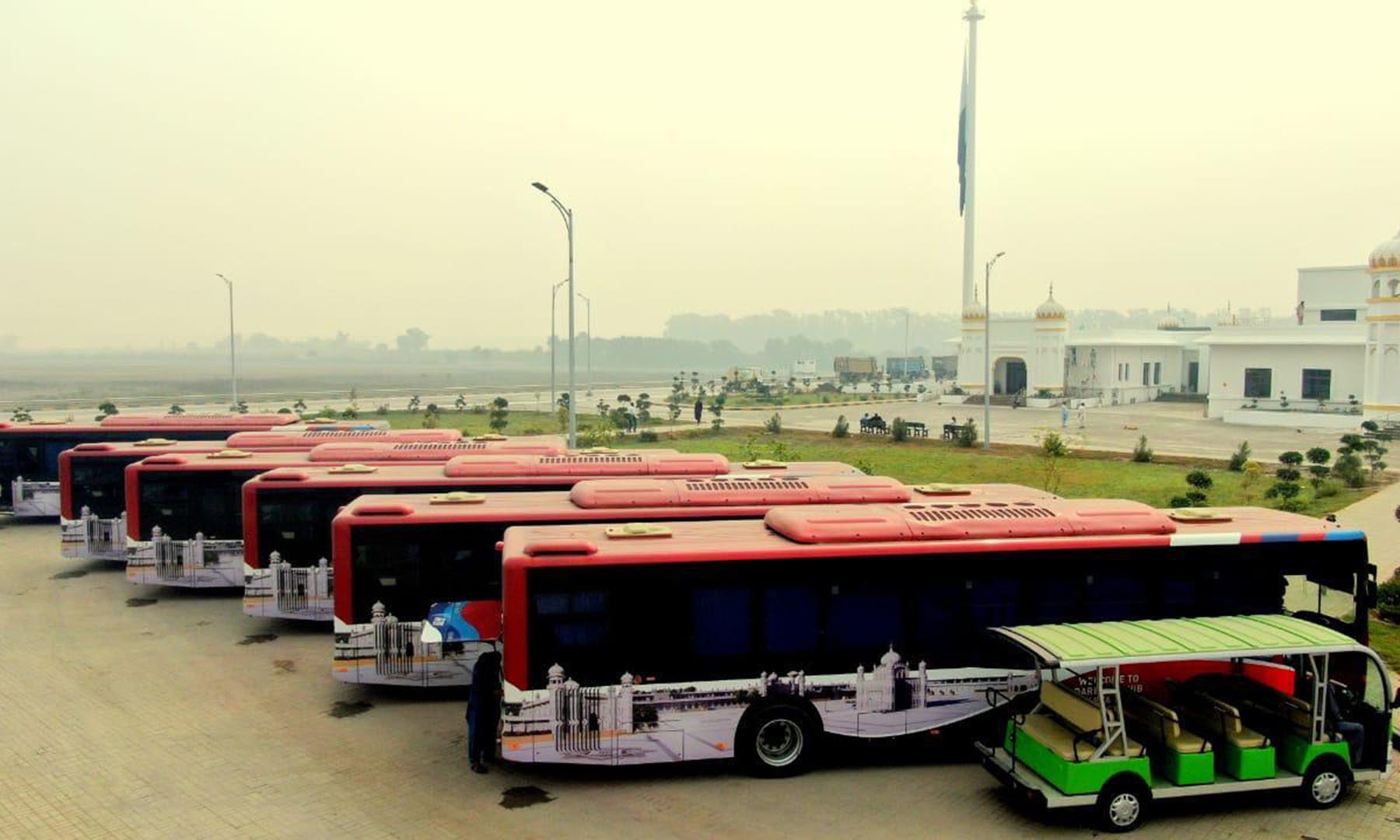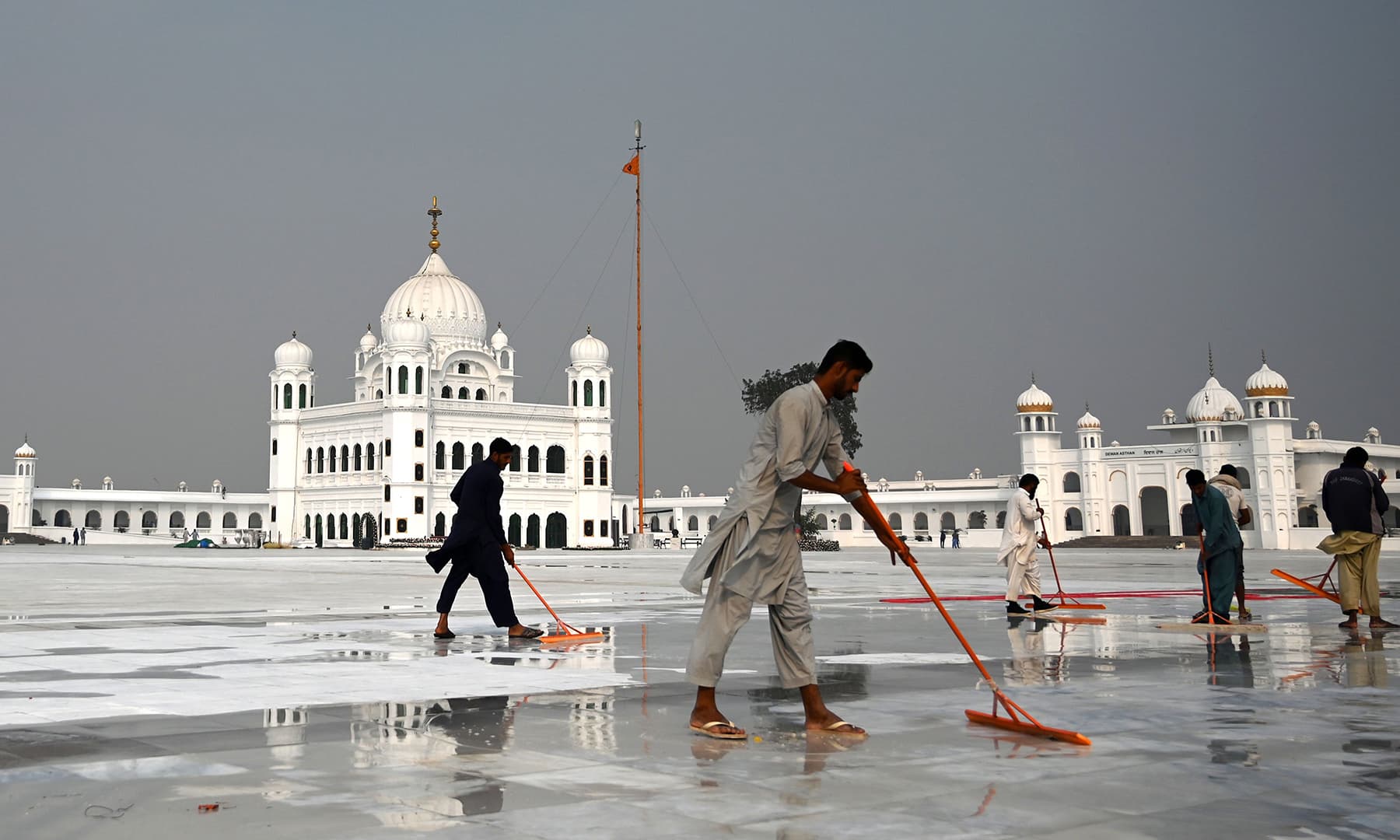Guru Nanak travelled widely but always returned to Kartarpur
Abdul Majid Sheikh
November 07, 2019
Kartarpur: Sikh pilgrims from different countries visit the shrine of Baba Guru Nanak Dev at the Gurdwara Darbar Sahib on Wednesday. Thousands are expected from around the world to visit Pakistan to celebrate the 550th birth anniversary of Sri Guru Nanak Dev which falls on Nov 12.—AFP
AS the world celebrates the 550th birth anniversary of the founder of Sikhism, the followers of Baba Guru Nanak flock to Kartarpur. Just how this place came into being and how many times did Guru Nanak return to Kartarpur is what will be recounted here.
To set things in perspective two sources called janam sakhis as selected by Bhai Gurdas and as recorded in the ‘Miharban’ and the ‘Puratan’ traditions will be tapped into.
According to these sources, a rich official referred to as karori was assigned by the Mughal court to “apprehend” the Guru. As the karori set off to undertake his assignment he was struck by blindness and other ailments. Just how the Guru assisted him is disputed since the Puratan does not mention it whereas the Miharban calls it a “miracle”.
Puratan janam sakhi details his journeys
Anyhow, the karori set up a small village on his land and named it Kartarpur. To secure the land either it was donated to the Guru or was purchased by one of his rich followers. The fact remains, though, that Kartarpur was founded for, or because of Guru Nanak.
Miharban janam sakhi mentions at the conclusion of Guru Nanak’s “five journeys” that Kartarpur had become his home during his travels and it was established during his journeys.
From Kartarpur Guru Nanak did return to his birth village Talwandi (now called Nankana Sahib) several times to meet his family. But it was Kartarpur he returned to from all his five travels to the world beyond Punjab.
Here I must describe his travels as narrated in different traditions. What’s interesting is that no matter which tradition one reads, they all end at Kartarpur. In Bhai Gurdas’s Var I, he visited all major pilgrimage centres, including Mount Sumeru in the Pamirs, north-west of Kashmir, somewhere near the Kalash Valley. It holds a special place in Buddhism, Jainism and Hinduism as these faiths consider it to be “the centre of the earth”.
From Makkah to Lanka
Next, he went to Makkah and Madina with his Muslim devotee Bhai Mardana. Here a legend is often narrated, though not mentioned in any janam sakhi, that Guru Nanak was sleeping with his feet towards the Kaaba when he was admonished by a mullah, to which he said: “Oh mullah, drag my feet towards the direction where Allah does not exist.”
He headed to Baghdad next where his Muslim devotee passed away. There Guru Nanak buried him. Mardana’s grave can still be spotted near the old Baghdad railway station with a plaque on which is inscribed, “Here lies buried Mardana, a friend of the Guru named Nanak, who buried him here.” On Mardana’s death, Guru Nanak returned to Kartarpur from where he also visited Patna and Multan.
Puratan janam sakhi details the directions in which Guru Nanak travelled. We see him walking towards Lahore, then to Panipat, Delhi, Benares, Nanakmata, Kauru and returning to Talwandi.
From here he travelled to Pakpattan, Goindval and Saidpur, now called Eminabad. Here, he was taken as a slave by the Mughal emperor Babar. After listening to his words it is claimed he was freed with great respect. He then came to Lahore staying for some time near Miani Sahib Graveyard and then returned to Kartarpur.
The second journey was with Mardana and Saido to Lanka. The third journey was with two other companions Hassu Lohar and Sihan Chhimba to Kashmir. The fourth journey, mentioned earlier, was to Makkah and the fifth journey was to Peshawar and the Gorakh Nath temples. In this trip, he met Lahina of Khadur, who was to be named Angad and went on to become the second Sikh guru.
Guru Nanak finally returned to Kartarpur and stayed there until his death in AD1538.
As he neared his end his Muslim, Hindu and Sikh followers wished to perform his last rites according to their faith. He asked them to bring fresh flowers. As they disputed over his last rites, a chador was placed over him and the flowers. Next morning the flowers were still fresh but his body had disappeared.
At Kartarpur, one can see a grave where the flowers were interred and a samadhi where the flowers were cremated indicating that the spirit of Kartarpur is beyond any religion but of a belief that all human beings, irrespective of gender, faith, race or class, are equal.
That is why Kartarpur Corridor’s opening represents a window for peace between neighbours who for time immemorial have been one.
Prime Minister Imran Khan said right after he took office that if India takes one step, he would follow with two.
Kartarpur represents that very spirit akin to the fresh flowers of Guru Nanak.
Abdul Majid Sheikh recently authored
The Probable Origins of Lahore and
other Narrations..






































